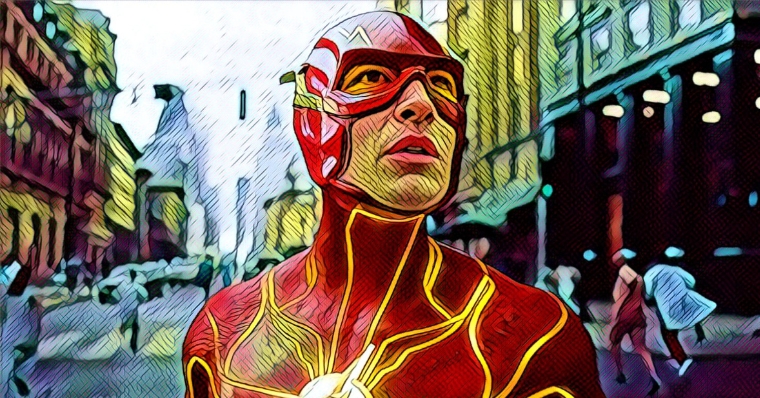Creating a film like "The Flash" (2023) demands a complex blend of artistry and technology, especially given the character's comic-book roots, where the ordinary laws of physics often take a backseat. One of director Andy Muschietti's ingenious solutions to inject a touch of gritty realism into this superhero saga was to position Batman as a pivotal element in the storyline. But it wasn't just any Batman—this was Michael Keaton's iconic Caped Crusader, a character whose presence required just the right atmosphere. Muschietti, an Argentine director with an eye for detail, was unyielding when setting the stage for Keaton's Batman. And here's the scoop—there's an artfully concealed production secret behind the cinematic version of Wayne Manor. The intriguing details have been revealed in the extra content available in the digital media release of "The Flash." While the movie incorporated some on-location shoots in the United States, the director focused on the Wayne Manor scenes in the United Kingdom. It's one thing to build a grandiose, highly-detailed Batcave on a Warner Bros. studio set in London—which Muschietti did in the most enormous soundstage available. However, he went several steps further by opting for four distinct, real-world locations to serve as the intricate backdrop for Wayne Manor. Let's peel back the curtain on this well-kept secret: Muschietti constructed an expansive Batcave in Warner Bros.' London studios and scoured the UK for 4 separate locations to represent Wayne Manor flawlessly. By doing this, the director created an architectural tapestry that effectively brought to life the multi-dimensional dwelling of one of DC Comics' most complex characters. And so, if you're a fan of "The Flash," Batman, or simply enjoy delving into the hidden aspects that make a blockbuster movie tick, this slice of insider information is a must-read.
1. Knebworth House
In the labyrinth of making a film that juggles comic book flamboyance with on-screen verisimilitude, shooting locations can be highly scrutinized. Case in point: "The Flash" (2023) director Andy Muschietti wanted to honor Tim Burton's 1989 film "Batman" by potentially using some of the same locales, including the renowned Knebworth House in the city of Stevenage. For those who don't know, Knebworth House is a cultural landmark in multiple films and TV shows, not just in Batman's universe. Muschietti was, however, not completely sold on using Knebworth House as Wayne Manor in its entirety. He admired the location but felt it didn't reach the architectural grandeur he envisioned for Batman's palatial residence. Ultimately, the director made a nuanced decision: He would use only the grand entrance gate of Knebworth House, thereby keeping a connection with Tim Burton's movie and allowing room for his own creative vision to thrive. You might have noticed in the film the swirling artificial fog that envelopes the scene when the two versions of Barry Allen—our beloved Flash—arrive at Wayne Manor's gateway. This is no casual cinematographic choice; the mist serves dual purposes. First, it adds a layer of gothic ambiance to the narrative, reinforcing the mysterious and complex world that these DC Comics characters inhabit. Second, it artfully obscures the facade of Knebworth House that lies behind the gate, essentially making it a versatile set piece without giving away its whole identity. The fog acts like a visual magician's cloak, permitting viewers to focus on the dramatic entrance while discreetly veiling the actual Knebworth House. It's an instance of intelligent filmmaking where visual effects enhance the mood and serve practical needs. This move complements the director's strategic approach to location selection. It sets a benchmark for how locations from the comics or other franchise films can be adapted, integrated, and disguised in fresh storytelling contexts.
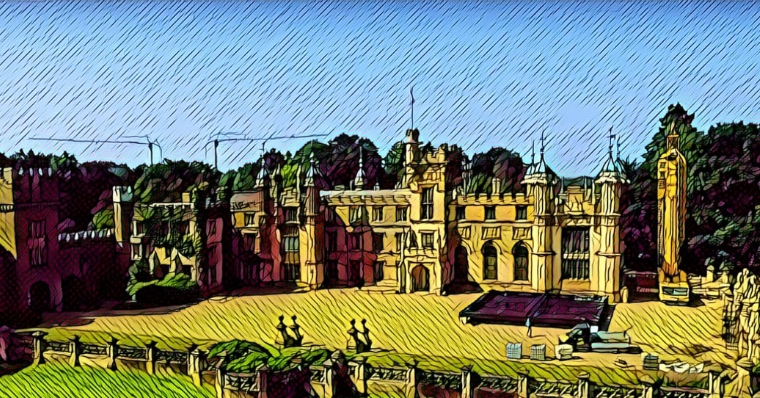
2. Burghley House
In the grand tapestry of making a blockbuster like "The Flash" (2023), each stitch represents an immense labor of creativity and detailed planning. When selecting shooting locations, especially for iconic places like Wayne Manor, directors often turn into architectural scouts with laser-sharp vision. Enter Burghley House, a distinct, awe-inspiring estate in Stamford's charming city. Director Andy Muschietti stumbled upon Burghley House and immediately felt it was a near-perfect fit for portraying the sprawling, exquisite exterior of Wayne Manor—right from its imposing facade down to its lush gardens. Yes, for those deeply entrenched in the DC Comics universe, you'll appreciate the harmonious balance of grandiosity and charisma that this specific location brought to the film. But hold on, there's more intrigue to this choice. The inspiration for Wayne Manor's roofing in the film was also borrowed from this very estate. That's not some random, throwaway decision; it's a calculated move. These architectural elements were meticulously recreated within Warner Bros.'s London studio complex as the backdrop in scenes where green screens were deployed. If you were to peel away those digital layers, the skeleton, so to speak, would resemble the roof of Burghley House.
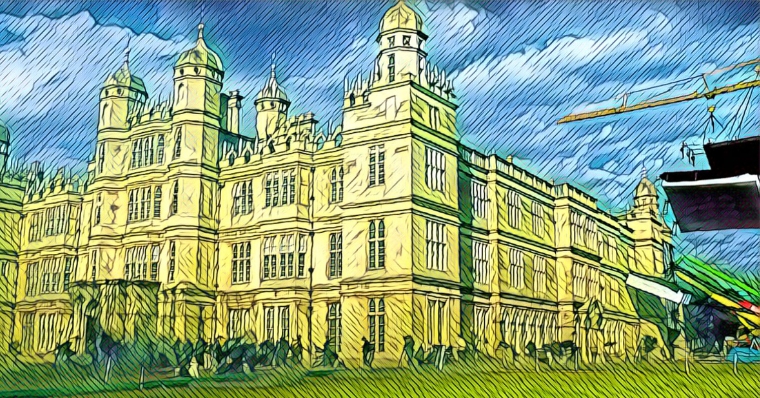
3. Hatfield House
There's an undeniable charm to the old-world allure that Hatfield House brings to the screen. Nestled in the heart of Hatfield, this magnificent estate boasts a rich cinematic history. Notably, it's no stranger to the world of Batman, having graced the screens in the iconic 1989 film. And now, in "The Flash" (2023), Hatfield House makes a resounding comeback. Within the confines of this illustrious estate in "The Flash," fans are treated to a tantalizing visual feast: the grand interiors of Wayne Manor. The entrance, with its imposing doors and marble flooring, and the vast library brimming with ancient tomes and dark oak shelves were both vividly brought to life using the distinct architecture of Hatfield House. While it might be easy for the untrained eye to gloss over, true fans will appreciate the layers of detail and the sheer luxury that Hatfield House added to the scenes. I mean, think about it. Wayne Manor isn't just any home; it's a testament to the Wayne legacy, and each room, each corner, speaks volumes about its rich history. Incorporating Hatfield House as the canvas for the Manor's interiors was a masterstroke. Fusing its authentic historical ambiance with the fictional world of DC Comics' Wayne Manor results in a setting that feels genuine and befitting of Bruce Wayne's lineage.
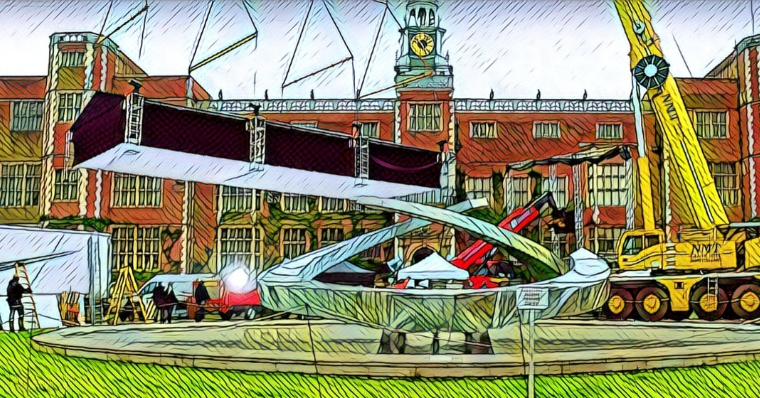
4. Tring Park School
Director Andy Muschietti's fervor to depict Bruce Wayne's home with utmost precision. One element he was particularly keen on was a distinctive wooden staircase immediately following the main entrance. Now, you may wonder, what's the big deal about a staircase? In the cinematic world, especially when dealing with iconic locations like Wayne Manor from DC Comics, the devil is indeed in the details. A staircase isn't merely a structure to ascend or descend floors; in this context, it becomes an architectural dialogue that contributes to the narrative. The production team finally hit the jackpot after an exhaustive search that probably felt like a treasure hunt. The perfect staircase, which had been inhabiting Andy's imagination, was found in an unexpected location. Not a grand estate or a historical building, but at Tring Park School for the Performing Arts. And thus, Tring Park School became the fourth filming location for Wayne Manor scenes.
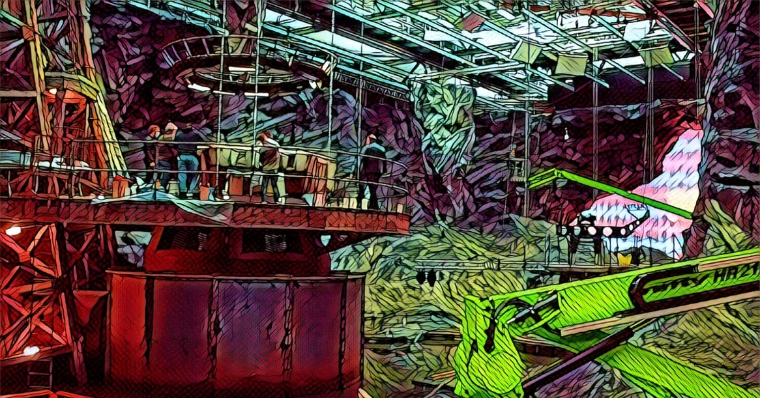
The Movie
When Barry Allen flexes his super-speed to dart back in time, hoping to reshape a devastating past, he stumbles—rather dramatically—into a universe teetering on the edge of chaos. Forget your run-of-the-mill, "go back in time and step on a butterfly" kind of problem. We're talking about a universe where General Zod is back and is not here for a social visit. He's rampaging with world-annihilating intentions and the usual lineup of superheroes? Well, they're conspicuously absent. Barry Allen, portrayed by the intriguing Ezra Miller, finds himself in a vexing dilemma. To untangle this apocalyptic mess, he needs to recruit a Batman who's hanging up his boots, way past his prime. We're talking Michael Keaton's Bruce Wayne —a Batman we all remember and revere. Yet, that's not all. Barry must also rescue a stranded Kryptonian to tip the cosmic scales back toward sanity. Can Barry run fast enough to save this fractured reality? Will his sacrifice be enough to hit the cosmic reset button on a universe gone haywire? Directorial magic is provided by Andy Muschietti, the genius behind "IT." The final version of the screenplay is the brainchild of Christina Hodson, known for her storytelling in "Birds of Prey" and "Bumblebee." But the true
Marvel—no pun intended—lies in the ensemble cast. Kiersey Clemons embodies Iris West, while Sasha Calle dons the cape as Kara Zor-El or Supergirl. Maribel Verdú and Ron Livingston complete this intricate web as Nora West and Henry West, respectively. And let's not forget the dual portrayal of Bruce Wayne/Batman, with Michael Keaton and Ben Affleck stepping into the iconic role. To put it briefly, "The Flash" is not just a film; it's a tapestry of narrative threads pulled from the most compelling arcs of the DC Comics universe. It dives deep into existential questions about choice, destiny, and the moral dilemmas heroes must face. The stakes are astronomically high for Barry Allen and every fiber of the universe he's desperately trying to save. So, if you're into multi-universe chaos, ethical dilemmas, and clock-ticking suspense that keeps you on the edge of your seat, this cinematic experience is what you've been waiting for. Will Barry outrun the impending doom, or will this universe spiral into an irrevocable descent? The only certainty is the heart-pounding thrill that "The Flash" promises, making it a must-watch for anyone who has ever pondered the complex interplay of choice, time, and cosmic responsibility.





